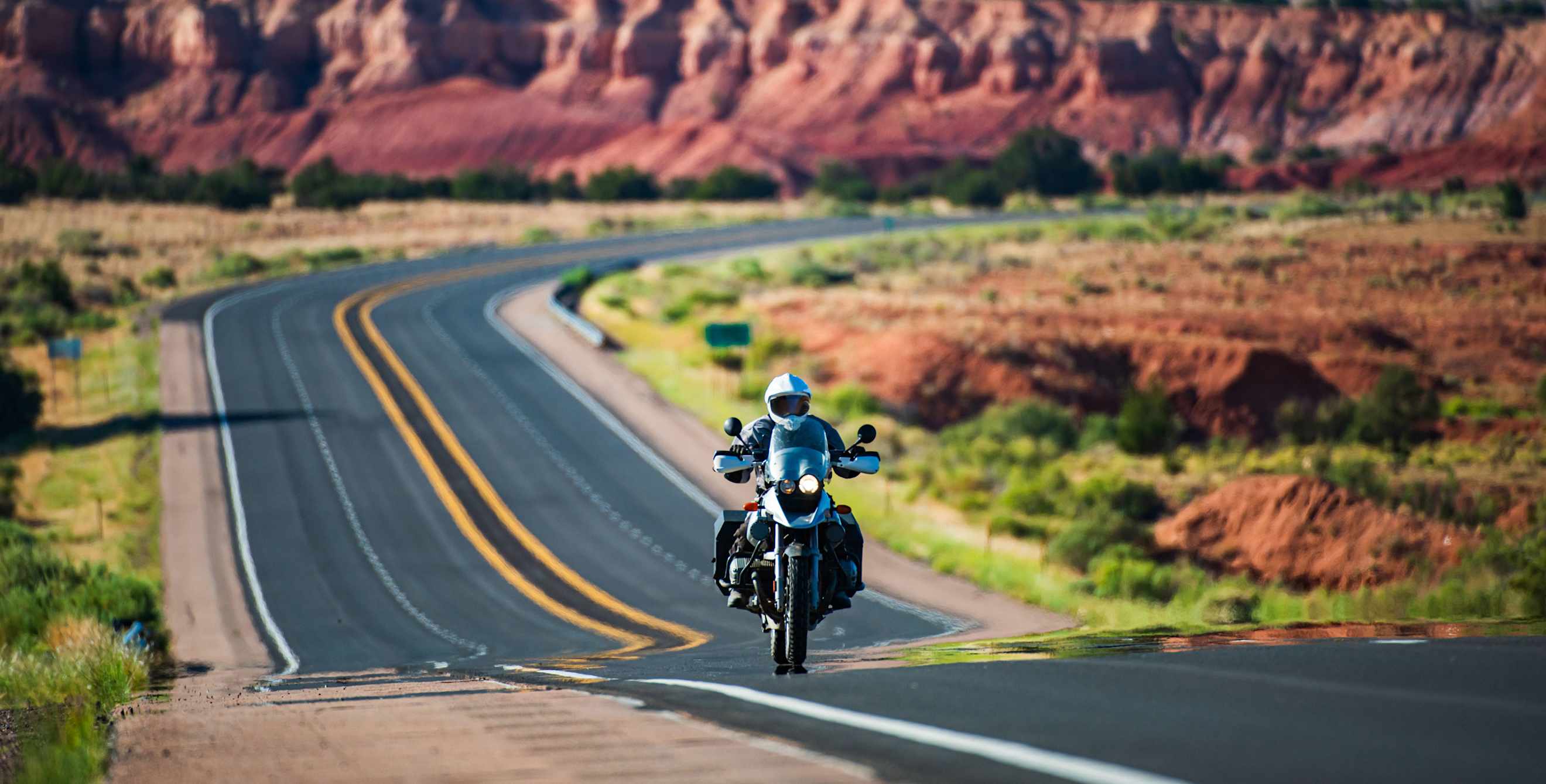How to Winterize Your Motorcycle
Are you getting ready to store your motorcycle for the winter? Before you do, prep it to protect it.

As temperatures drop, your riding may (sadly) be on hold for a few months. But if you’re tempted to simply toss a protective cover over your bike for the winter and call it a day, you may want to stop and think twice. It’s important to properly prepare your bike for the colder months so you don’t end up with problems like a dead battery, a brittle chain, or sludged oil.
Take the following steps to winterize your motorcycle so when springtime arrives, you’ll be ready to ride.
Freshen the Gas
Gas starts to go stale within 30 days, leaving harmful deposits within your bike’s internal anatomy. So take your bike out for a ride before filling the tank with fresh gas. After your fill up, add some stabilizer to your tank, taking care to read the instructions for the right dosage. Finally, run your bike for a bit to circulate the stabilized gas through the system.
Change the Oil
Motor oil breaks down over time which can lead to rusting and corrosion. So change your oil and filter before putting your bike to bed for the winter.
Change Your Other Fluids
Change your coolant, as well as your clutch and brake fluid, if it hasn't been changed recently. If you just changed these fluids last month, and you’ve only ridden your bike a few hundred miles, you can take a pass.
Give Your Bike a Bath
Any grime that lingers on your motorcycle’s surface—like dead bugs or water spots—can corrode the paint. So give your bike a good wash, followed by a wax, to protect against moisture. And don't forget to polish the chrome.
Protect Moving Parts
Hit your bike’s moving metal parts with some lubrication to protect against corrosion while in storage.
- Chain: Before lubricating your chain, take a short ride (just a few miles) to warm up your bike, which will help dissolve any product you apply. Then, coat the chain with a special chain lube spray or wax.
- Drive shaft, fork tubes, and other exposed metal: Give any other metal parts a spritzing of WD-40 or machining oil to displace any water and stave off corrosion. Remove your spark plugs, squirt product into the holes, and turn your engine over a few times to coat the cylinders before replacing the spark plugs.
Safeguard the Battery
To keep your battery healthy, disconnect it from your bike to clean the terminals, swabbing them with a bit of petroleum jelly to prevent rust. Connect the battery to a trickle charger for the winter.
Check Your Tires
Examine your treads and use a tire gauge to check your tire pressure. (Refer to your owner's manual for the proper psi.) While your bike is parked for the winter, consider storing it on a stand or lift to give your tires a break and prevent flat spots.
Discourage Pests
Mice and other critters looking for a cozy winter home might be tempted to curl up in your exhaust pipes. To keep them out, block your pipes with a muffler plug.
Find a Safe Spot
Store your bike in a garage or other indoor space, if possible, to protect it from the elements. (A heated garage is ideal.) Keep your motorcycle away from refrigerators and freezers, which emit ozone gas that might degrade your bike’s rubber parts. Cover your motorcycle with a breathable cover that won’t trap moisture.
Get Covered
Of course, you’ll also want to protect your investment. Whether you own a dirt bike, a touring bike, or a daily cruiser, sign up for individualized motorcycle coverage that meets your needs. While your bike might be resting for the winter, it’s still at risk of getting damaged or stolen, so it’s a good idea to keep it insured year-round.
In addition to standard coverage, consider adding on a few extras. If your bike has some sweet accessories like chrome foot pegs or saddlebag accents, rest assured that they’re protected with accessories coverage. If you have a breakdown far from home, there’s always trip interruption coverage for living expenses while your bike is being repaired. And should your personal belongings, like camping equipment or touring gear, be damaged or stolen while on your bike, carried contents coverage has you covered.
AAA Motorcycle Roadside Coverage
Depending on where you live, towing service is included in your AAA Membership. Members receive roadside assistance with the following plans:
Let AAA help with year-round coverage for your motorcycle.
The content provided in this article is for informational purposes only. AAA of Northern California, Nevada & Utah makes no representations as to the accuracy or completeness of the information contained in this or any article on the AAA website.